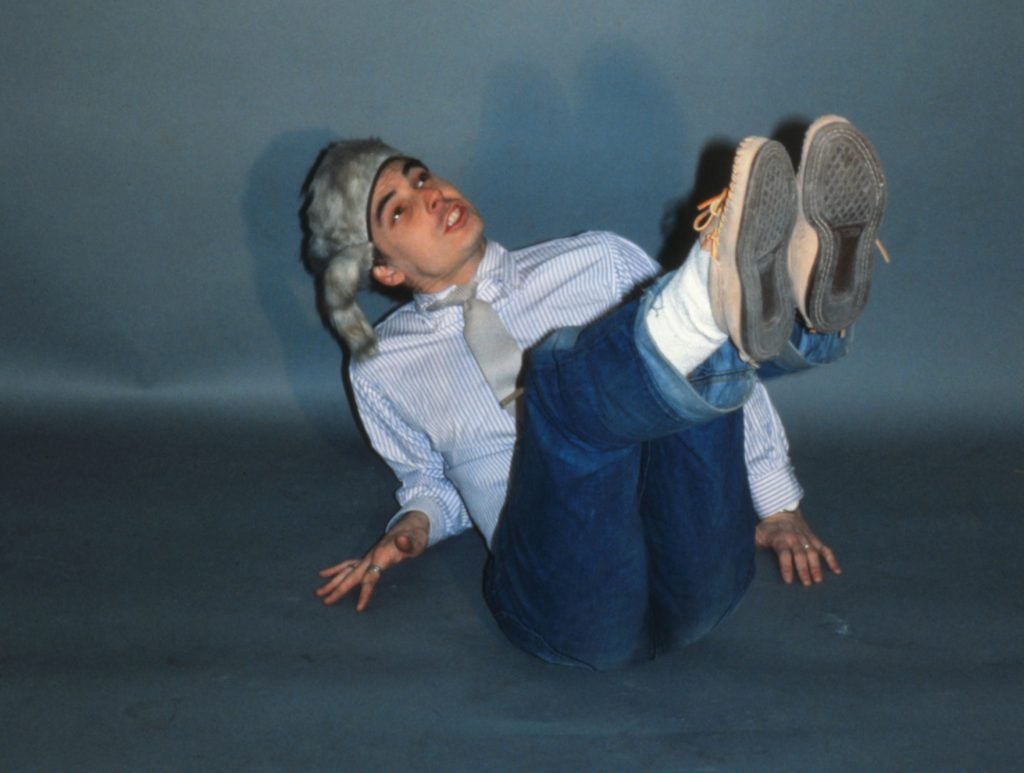Jimmy DeSana saw the world through his camera. His surreal staged photos captured the very real risk, liberation and subversion of queer subculture of 70s and 80s New York City. Yet for years, DeSana’s work was largely left out of conversations around LGBTQ photography and the Pictures Generation.
Now, the world has finally caught up. “Jimmy DeSana: Submission” at the Brooklyn Museum., curated by Drew Sawyer is the first museum survey of DeSana’s oeuvre.
Submission features more than 200 works, including DeSana’s technicolor suburban series, selections from his BDSM photobook, intimate portraits of Punk and New Wave legends, his later experimental collages, and more, spanning over 20 years.
For DeSana, the body was the medium and the muse. He explored the queer body within a dreamlike, often faceless chromatic environment, but his images were never completely removed from their times. The devastation AIDS brought to the queer community — DeSana passed away from an AIDs-related illness in 1990 at the age of 40— postwar capitalism and the deterioration of the American Dream set the stage for his aesthetic world. It’s no wonder that when William S. Burroughs wrote the introduction for DeSana’s 1980 book Submission, he initially mistook DeSana’s staged BDSM images as documentary photographs.
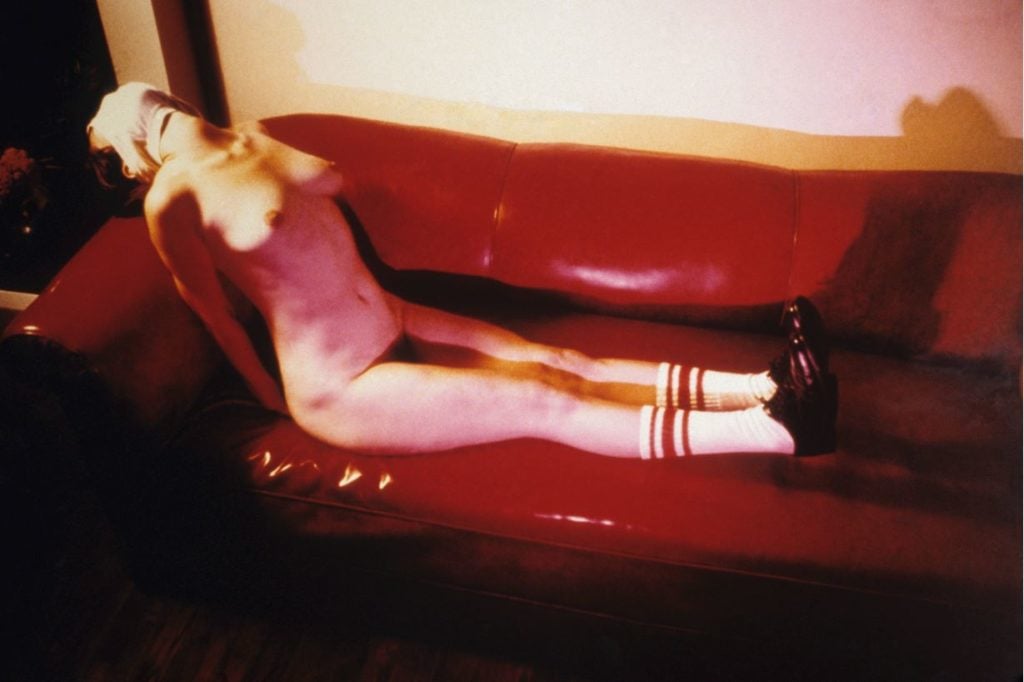
From Jimmy DeSana’s series “Suburban.” Photo: Courtesy and copyright the Jimmy DeSana Estate and PPOW Gallery.
During his life, DeSana shared his world with the artist Laurie Simmons, who was a kindred spirit with her off-kilter staged domestic scenes featuring dolls and miniature objects. The two young artists shared an apartment, shared a studio, shared ideas, shared a love for worldbuilding. For more than three decades, Jimmy’s entire body of work has lived with Simmons — first in cardboard boxes then, over time, in neatly cataloged binders, and now displayed across museum walls.
Artnet spoke with Simmons leading up to the opening of DeSana’s exhibition along with her own solo show, “Color Pictures/Deep Photos” at 56 Henry gallery. She shares how, like all artists of the past, DeSana’s work has finally taken on a life of its own.
You’ve played a pivotal role in preserving and framing Jimmy DeSana’s work and advocating for his recognition. When we talk about his legacy, where should we start?
We’d start in the very fertile period of the early 1970s, when the downtown art scene was very small, very intimate, and very exciting–and also very wild. There was music, art, performance, poetry and theater. Everything was exploding and Jimmy was a real presence in that scene. He was also in some sense documenting it. I think it’s important to understand that his life ended during a pandemic, during the AIDS epidemic, which was devastating to those of us who lived through it and lost so many friends and colleagues. It also makes his work and his whole existence more relevant to these times.
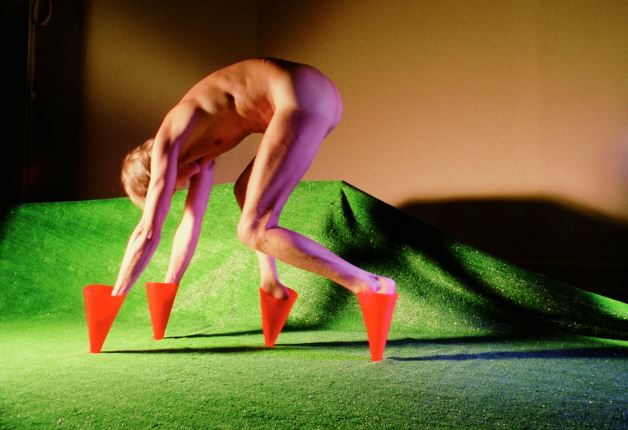
From Jimmy DeSana’s series “Suburban.” Photo: Courtesy and copyright the Jimmy DeSana Estate and PPOW Gallery.
What has your relationship been with the work over the years since it was created, and can you explain your role as the executor of his trust?
He left me the estate when he was actively dying. He was working up until the very end of his life and he left the concerns of maintenance to me. His first priority was to make as much work as he possibly could before he died.
The idea that I was suddenly going to take on the life’s work of another artist was really daunting. The work arrived in multiple cardboard boxes. There was a complete and utter lack of organization. For the first 10 years, I felt bad about everything that wasn’t happening rather than feeling good about the progress that I was making with archiving and organization. Then at around the 10 year mark, I started to realize that Jimmy’s work was going to have a life of its own, it was going to be on its own schedule and have its own trajectory like the work of most artists. Around that point, I thought it’s going to take 20 years for the world to really catch on. So here we are, 32 years later.
The world has caught up. Your works are both rooted in the conceits of memory and performance. Can you share a memory you have with Jimmy that you return to?
We were friends for 18 years and I’ve had the estate for 32 years. So I’ve lived with the work longer than he and I were together as friends. First, we were roommates and we lived in a very long, skinny loft with light at both ends—a long, dark, “early Soho days” kind of loft. It was 200 feet long: he had 100 feet, I had 100 feet. He took the freight elevator side of the space and I took the automatic elevator, because he was frankly really worried about me operating the manual freight elevator all the time. He was a super considerate loving friend and I always felt like he was looking out for me.
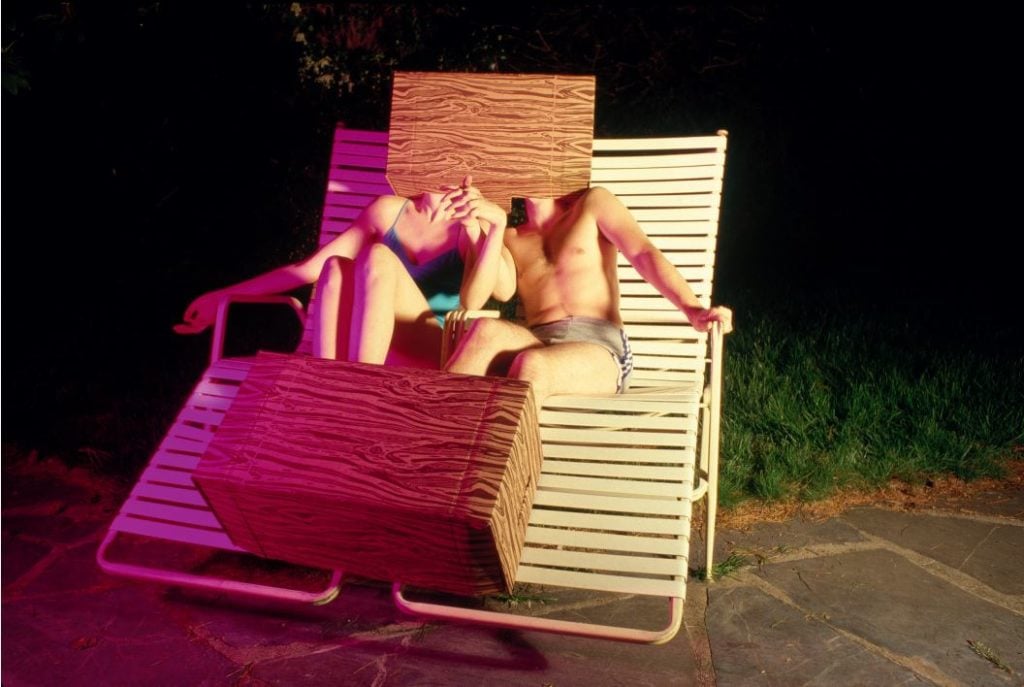
From Jimmy DeSana’s series “Suburban.” Photo: Courtesy and copyright the Jimmy DeSana Estate and PPOW Gallery.
When I think about him, I really love to think about sitting there having lunch with him when we were taking breaks from our work. Every day we would take a break from our darkrooms and meet for lunch. I remember sitting and talking and sharing stories whether it was about our childhoods or what we were doing the night before. He ate the same thing for lunch every day and would often make my lunch: a tuna fish sandwich. That would go on for months, then he would switch to a hamburger and that would go on for months, then back to tuna fish. He had a very regimented lifestyle. He was very strict with what he wore, what he ate, when he worked, even when he went out.
It’s those everyday moments that gain significance and meaning over time. Could you describe the first time that you met?
Yes, we met on the subway going out to Far Rockaway, a bunch of us were going to the beach and it was a crowd of young artists, photographers and musicians, a bunch of us that had all banded together. We were introduced by a mutual friend because we were both looking for a live-work space and we decided at that moment that we would look together.
He was a very small, very handsome Southern gentleman. He was wearing a white button-down shirt and khakis, a white panama hat, A Yashica Electro 35 GT camera around his neck which was spray painted white. He was also wearing a skinny little rhinestone necklace. I’m pretty tall, so we were a pretty Mutt and Jeff kind of couple.
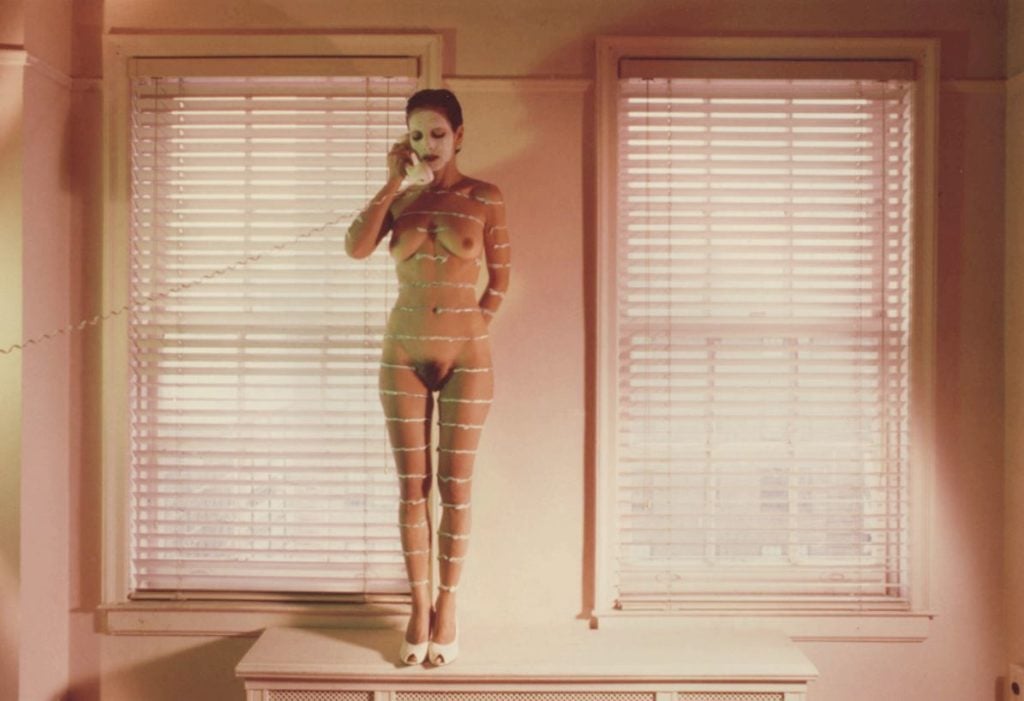
From Jimmy DeSana’s series “Suburban.” Photo: Courtesy and copyright the Jimmy DeSana Estate and PPOW Gallery.
You were both taking photos at the same time and don’t have photos together because you were constantly taking portraits of each other. Your image Walking Camera II (Jimmy the Camera) really speaks to the way that you both redefined the boundaries of portraiture. When you took that photo in 1987, Jimmy was already diagnosed with AIDS. How did this image come about and how was it collaborative?
Yes, we took a lot of pictures of each other. He had been diagnosed in the summer of 1985. He had his spleen removed. In fact, he has a picture of himself with his scar that’s a very Warhol influenced self-portrait. By the time I took the portrait of him wearing the camera, I knew what was ahead. It was hard for me to be honest with myself about it, but I knew because of what was happening all around us.
When I put Jimmy in the big camera with white tights and white ballet slippers, he loved the costume, he was very proud. He was one of the first people I knew who worked out a lot. He was super proud of his physicality and really proud of his legs. He had beautiful legs. He was really excited to be in the photograph and I think he knew it was an homage. I knew what I was doing. I knew that I was trying to preserve him in some way for myself because I knew what was coming. It was an amazing moment for us, but like most of our more sentimental or emotional moments it was not acknowledged at the time. He taught me so much. He was my camera in so many ways.

From Jimmy DeSana’s series “Suburban.” Photo: Courtesy and copyright the Jimmy DeSana Estate and PPOW Gallery.
Right, it’s easier to acknowledge meaning over time as you get more distance. Now that time has passed, how does Jimmy’s work fit into contemporary culture?
Having lived with Jimmy’s work for so long, it has been very rich and rewarding for me to see his work become more relevant as time goes by. There are times when I look at his pictures — and it’s important to understand that there are so many pictures that it’s easy for me to uncover something I’ve never seen — I’ll see something and think “Wow, that looks like somebody made it this morning.” It feels not only relevant, but visually right.
You’ve spoken about how it has become increasingly difficult to shock people. At the time you and Jimmy were starting out, shock had a great value and was really subversive. How were Jimmy’s nudes originally received?
This is an interesting question because I think the desire to shock was there. There was a lot in his work that was shocking to the rest of the world, but within our own small world, everyone was very open and it was very difficult for us to shock each other. We had all gone through a lot to end up in downtown New York in that period of time. That’s something that Jimmy and I talked about and really shared.
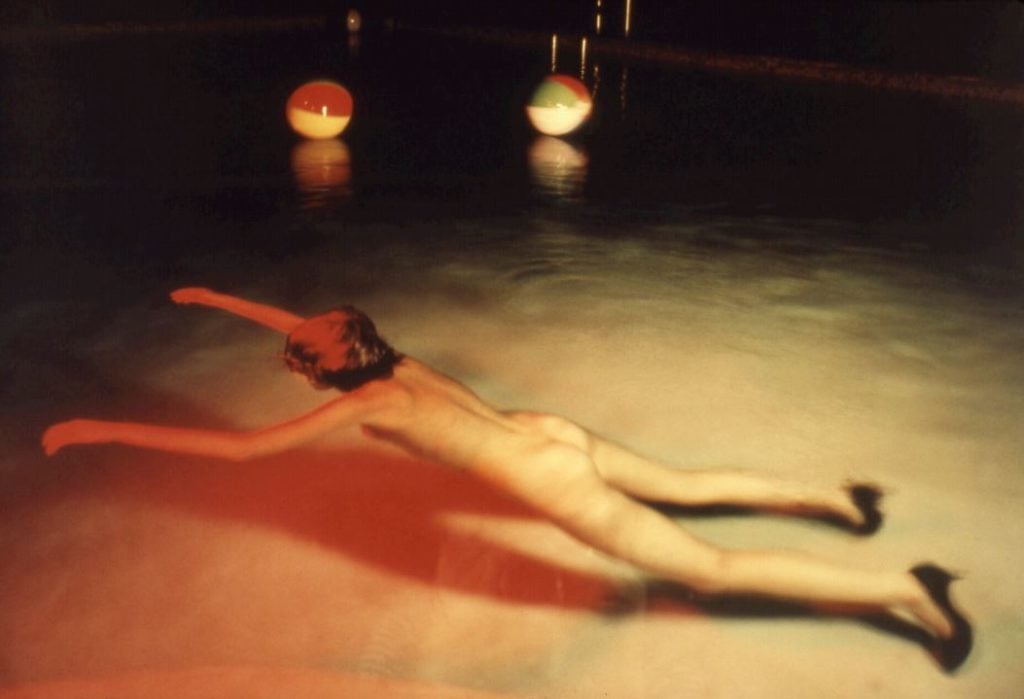
From Jimmy DeSana’s series “Suburban.” Photo: Courtesy and copyright the Jimmy DeSana Estate and PPOW Gallery.
You and Jimmy both explore the sexualized body in your work. For your upcoming show “Color Pictures/ Deep Photos 2007–2022” you revisited and reworked a series that you made 15 years ago, which features cut-out images of women from amateur porn websites placed within your doll houses. These works feel so relevant now that OnlyFans and PornHub have become a part of popular culture. Why didn’t you show your work originally?
No one wanted to show it. I showed six of the works at an art fair in 2007 and that was the only time they saw the light of day. I remember getting some very odd reactions; a woman, a collector, came up to me, looked deep into my eyes and said: “I thought you were a feminist.”
I surprised some people with that work when I made it in 2007. I had just finished making my first movie, The Music of Regret. It was a huge undertaking for me to make that film and when it was done, I felt like I wanted to start over. I needed a rebirth.
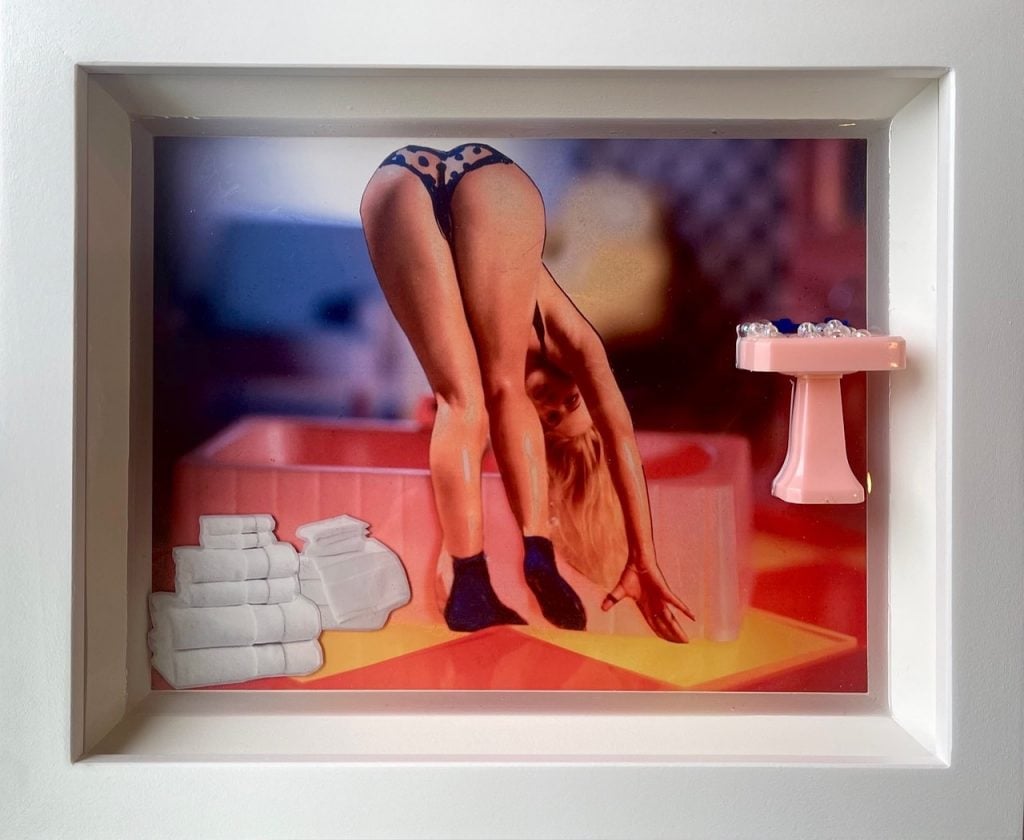
Laurie Simmons, Color Pictures / Deep Photos (Upside down Girl in Polka Dot Underpants)
(2007–22), ink jet, plastic, paper, resin, wood.
I figured out I could download amateur porn. I don’t know if the women had webcams in their dorm rooms or homes or how it was made, but a lot of the women in the pictures were so tender-looking and looked like people that I would know, or people that I would have been friends with. I felt connected to them. I’ve really liked working with this series again. It’s a great thing when you can put something away for later. You can designate it a failure or you can designate it as ahead of its time—or you can designate it as a pile of crap. But it’s still my prerogative and my privilege to revisit it, and that’s what I’ve done.
When you recreated these images as sculptures, you added elements of furniture and elements of texture. That makes me think about the context that set design contributes to films. For a traditional film, if you’re watching a movie based in the 1970s, there can’t be a modern can of Coca-Cola.
But at the same time, you could use that disjointed signifier to great effect. I’ve always felt that the inherent limitations of working the way I mostly work — finding things of similar scale to put together when I set up scenes — was actually making my pictures what they are, which is always slightly off-balance, disjointed even if you don’t get that right away. I know I can’t make it perfect. I never could, but goddamn, I try so hard for perfection. Then it occurred to me that my pursuit of perfection and my failure to achieve it—those are my pictures.

From Jimmy DeSana’s series “Suburban.” Photo: Courtesy and copyright the Jimmy DeSana Estate and PPOW Gallery.
The use of nude bodies staged in these surreal domestic spaces is one of the many threads that connect your work with Jimmy’s. What was it like working on both your exhibition and Jimmy’s show at the same time, and revisiting old material?
I think it’s important to understand that I’m always working on DeSana material. I have a lot of jobs. I’m an artist, I’m a mother who raised two kids, took care of ailing parents. I have the DeSana estate, I often had to teach and take commercial work to support my own work. I’m used to compartmentalizing.
One of the things that I think is interesting is that when Ellie Rines and Era Myrtezaj at 56 Henry wanted to show this body of work, of course they didn’t really know how much it connected to the DeSana works. Drew Sawyer, the curator who is organizing Jimmy’s show, is brilliant, passionate and thorough. I give input when Drew wants input, but in terms of the way the show has shaped up, the selection of works, etc, that’s Drew.
The universe works in strange ways and I have been thinking about how profoundly influential Jimmy’s work has been on me and how the basis of these works that I’m about to show are in fact extremely influenced by Jimmy’s lighting, decor, and poses
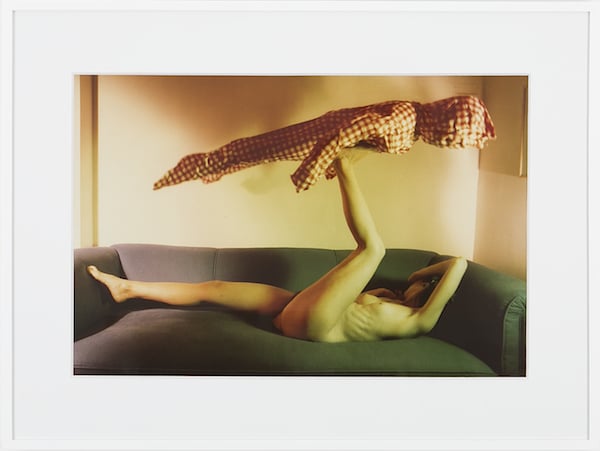
Jimmy DeSana, Contact Paper (1980). © Jimmy DeSana, courtesy Jimmy DeSana Estate and PPOW Gallery.
Who would have thought that so many years later both of your art would be out in the universe at the same time?
Usually I think about the DeSana work and lately I find I’m thinking more about Jimmy the person and what he would think. I think, “Why me? What did he know about me that I didn’t know about myself?” Because I didn’t know if I could do this, but I never ever would’ve said no to him.
I’ve moved seven times in New York and the estate always comes with us. I’ve always had to pack it up, unpack it. I’ve always had people working on it in my various studio spaces. It’s just been part of my life for so long. The fact that the world will finally have an opportunity to see his work — I don’t think I’ll really get that until I walk into the museum galleries.
“Jimmy DeSana: Submission” runs November 11- April 16, 2023, at the Brooklyn Museum. “Laurie Simmons: Color Pictures/Deep Photos 2007–2022’ runs through January 15, 2023, at 56 Henry.
More Trending Stories:
In a ‘Once-in-a-Lifetime’ Discovery, Swedish Archaeologists Have Unearthed a Cache of Viking Silver That Still Looks Brand New
Sarah Biffin, the Celebrated Victorian Miniaturist Born Without Hands, Is Now Receiving Her First Major Show in 100 Years
Disgraced Antiques Dealer Subhash Kapoor Handed a 10-Year Jail Sentence by an Indian Court
It Took Eight Years, an Army of Engineers, and 1,600 Pounds of Chains to Bring Artist Charles Gaines’s Profound Meditation on America to Life. Now, It’s Here
‘I’ll Have Terrific Shows Posthumously,’ Hedda Sterne Said. She Was Right—and Now the Late Artist Is Getting the Recognition She Deserved
Click Here to See Our Latest Artnet Auctions, Live Now
